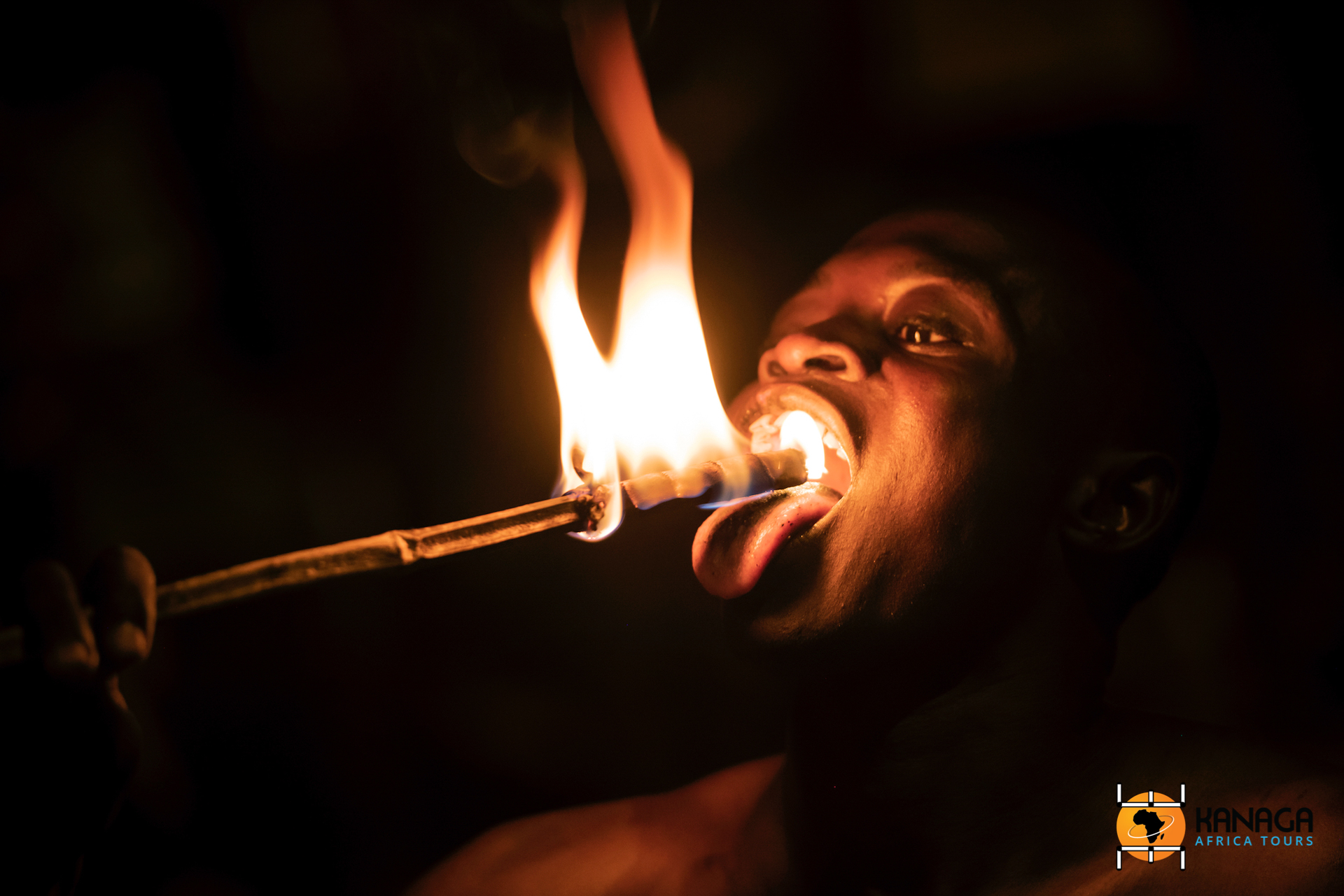© T. Redaelli
Dapaong is the main city of the Savannah region and the capital of the Moba-Gourma culture. In this region, traditions have remained largely intact and even today the population lives mainly on hunting and agriculture.
A few tens of kilometres away, in the heart of the savannah, the mysterious Namoudjoga rock paintings, stylised drawings on the wall of a marvellous megalith, which have not yet been dated with certainty, despite the numerous studies carried out, are within easy reach. However, scientific teams agree that they are very old, dating back at least 4,000 years.
On the border with Ghana, near the village of Nano, lies one of the most spectacular sites in all of Togo. The Nok and Mamproug granaries, on the list in an attempt to become a UNESCO heritage site. On reaching the top of the cliff there is a spectacular view of the entire savannah region and hidden in the cracks of the rock, which can only be reached by abseiling down an iron ladder attached to the wall, you reach an unsuspected site that was once a refuge for entire tribes, fleeing enemy incursions, Islamisation and slavery. Here, a small spring of water gushing from between the rocks made the inaccessible place habitable even for long periods. A series of clay granaries were built to store grain, and the deeper caves served as dwellings and meeting places. At that time, the only way to access the caves was probably by abseiling down the smooth cliff face, using ropes and lianas, or by clinging to the roots of trees. Not recommended for those suffering from vertigo!
A must-see in the north of Togo is Sokodé and its surroundings. A rather densely populated town, Sokodé itself does not have many attractions, apart from the bustling market and an interesting cooperative offering wonderful traditional cotton textiles, handmade soaps and natural body creams. The real point of interest in the area is the nearby traditional village of Tem warriors, called Kparatao, where the original tombs and relics of the founder and his successors are still preserved.
The Tem were traditionally brave warriors, to the extent that they had developed the power to be immune to fire burns. This ability is still passed on from generation to generation. A unique and very suggestive experience is to attend the famous night-time fire ceremony, in which a group of initiates cover their bodies with embers and pass burning embers even on their tongues, without suffering any burns. This is how they defeated their enemies for centuries and preserved their identity.
About 30 kilometres from Kparatao is the Tchamba village, where one of the most characteristic weekly markets in the whole of Togo takes place on Sundays. The Sokodé area is one of the most Islamised in Togo, but it is also a crossroads of ethnic groups, peoples and languages, which have kept their traditions alive. The Tchamba market is the essence of this, the meeting point where a multitude of people from all over the region converge, with the most varied merchandise and their own savoir-faire, from Tamberma to Peuhl, from Kabyé to Tem, and it is not uncommon to meet merchants from Benin, Ghana and Burkina Faso. The market area is huge and the stalls are arranged around the main structure and in the surrounding streets. Everything from foodstuffs, hardware, calebasse, textiles, clothes, crockery and musical instruments can be found here. The number of street food vendors is impressive. There is something for everyone, from fried fish to roast chicken, from agouti to meat skewers, from guinea fowl with sweet potatoes or fried yam to rice and cassava with sauce, and a feast of fried peuhl cheese with hot sauce. Truly mouth-watering, but you’ll have to adapt to eating standing up.







